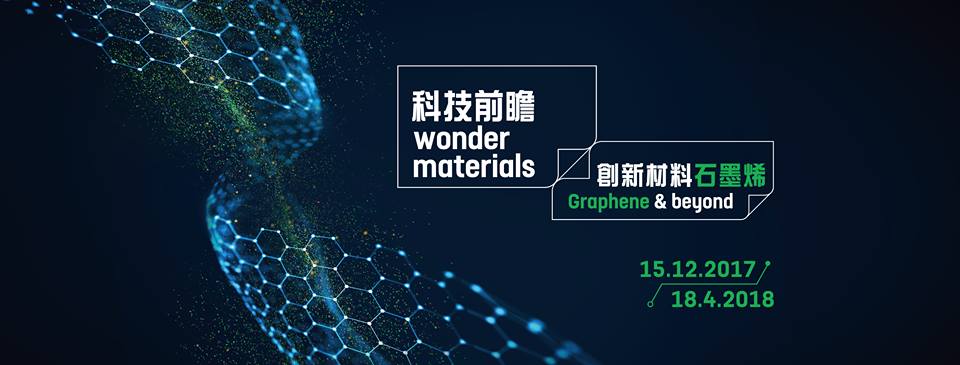Graphene is awesome
So in January I had to visit Hong Kong, and while I was there, I was lucky enough to catch an exposition in local science museum about graphene and other 2D materials.

Let me point something out while we are at it:
If you end up for a few days in Hong Kong, and somehow you get to have a few hours of free time around Tsim Sha Tsui, make sure to drop by HK Science Museum; especially if you are with kids. Although, as a 26 year-old at the time, I still had a ton of fun there. But I digress.
What's graphene anyways?
Take a pencil. Its core, the thing you're writing with, is graphite. Now take a knife and carefully shred some of graphite over a piece of scotch tape. Take your scotch tape and stick two ends together, so that pieces of graphite end up between two sticky sides. Then unfold the take and repeat that operation several times. At some point you will get particles of carbon so thin, they will practically be 2-dimensional.
Graphene is a layer of carbon exactly one atom-thick. But we've known about carbon and atoms for decades now, what's so special about it?
Well, you see, it was only in 2004, when Professor Andre Geim and Professor Kostya Novoselov, the researchers from the University of Manchester have finally extracted graphene from graphite using the scotch tape method. They were awarded with Noble Prize in Physics back in 2010.
A lot of research has been done since then, and for a reason:
-Graphene has a very low electrical resistance, meaning it is very conductive;
-Graphene is extremely strong - many times stronger than steel;
-Graphene has unique optical properties that make it a perfect material in production of touch screens, LCD displays, OLEDs(organic LEDs) and even solar cells;
-Graphene has a high thermal conductivity, meaning it can revolutionize products that require heat management, such as LED lighting fixtures;
Combined, all those properties open completely new horizons for development of new and modernization of existing technologies in various industries, starting from microscopic-sized applications in medicine and finishing with massive energy production and storage projects that at some point in future will feed our planet with green energy.
Okay, shut up and take my money. Why aren't we using graphene everywhere yet?
Well, we have to begin with something. A way from lab to a production line is usually long, and if we speak in terms of tech, it takes time to get to the point where cost of production of a material, graphene in our case, is economically feasible and the quantities are actually adequate to meet the potential demand. Besides, as it happens with any other tech, it takes time to develop products to deploy the tech at, and then to prototype and scale the production. It is not like you can just sit there all day and make it using the scotch tape method, right?
And the good news are: it looks like the future of economically feasible graphene manufacturing is already here:
FGV Cambridge Nanosystems is producing 99.9% pure graphene at a capacity of 5 tons a year. Here is something more exciting for you: since 2013, Cambridge Nanosystems has begun production of graphene from food waste. F@#$ing what now?
You see, in simple terms, as your food waste(just like any human and animal waste, by the way) decays, it produces methane. Now imagine that instead of all that waste ending up at the landfill, it is dumped into special stations, where microorganisms digest the waste, and due to the lack of oxygen in the station, the byproducts of a process are methane or biogas, and organic compost. That biogas is used by Cambridge Nanosystems as raw material for graphene production.
But that is not it either. According to Futurism, a team of scientists from Kansas State University lead by Chris Sorensen, has developed and patented a process, that is so simple, it only requires hydrocarbon like ethylene, oxygen and a spark plug . Basically, you pump your oxygen and ethylene into a chamber, after that you perform a contained detonation with a spark plug.
Graphene made of almost thin air using a spark. Is that not genious?
A way to go.
At this point companies can get graphene between 5.8£ and 240£ per gramm excluding VAT in the EU; depending on its grade. Not bad for a material "mined" from waste food and almost thin air :)
My point? Want to become rich and famous? Go make yourself some graphene or patent a way to produce it, and make it even more available worldwide!
Thank you for your time!